The Gazan born artist, Taysir Batniji, has become one of Palestine’s leading conceptual artists. Batniji first left Gaza at 25 years old, and has travelled intermittently between his current home of Paris and his native Palestine. His displacement between two cities and two cultures has a strong influence on his work and artistic identity – a person and a practice within and without a country, a conflict, and a memory.
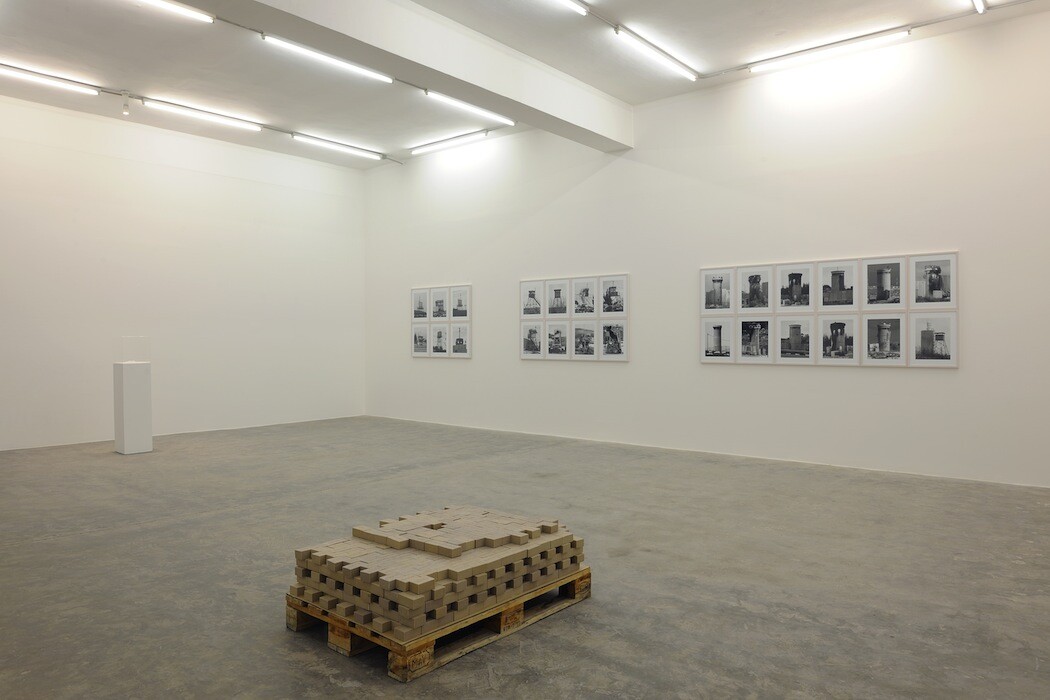
The show revolves around the dualities that have shaped Batniji’s life. His work looks at life in between worlds, with one living in the political situation and the other fading away from it.
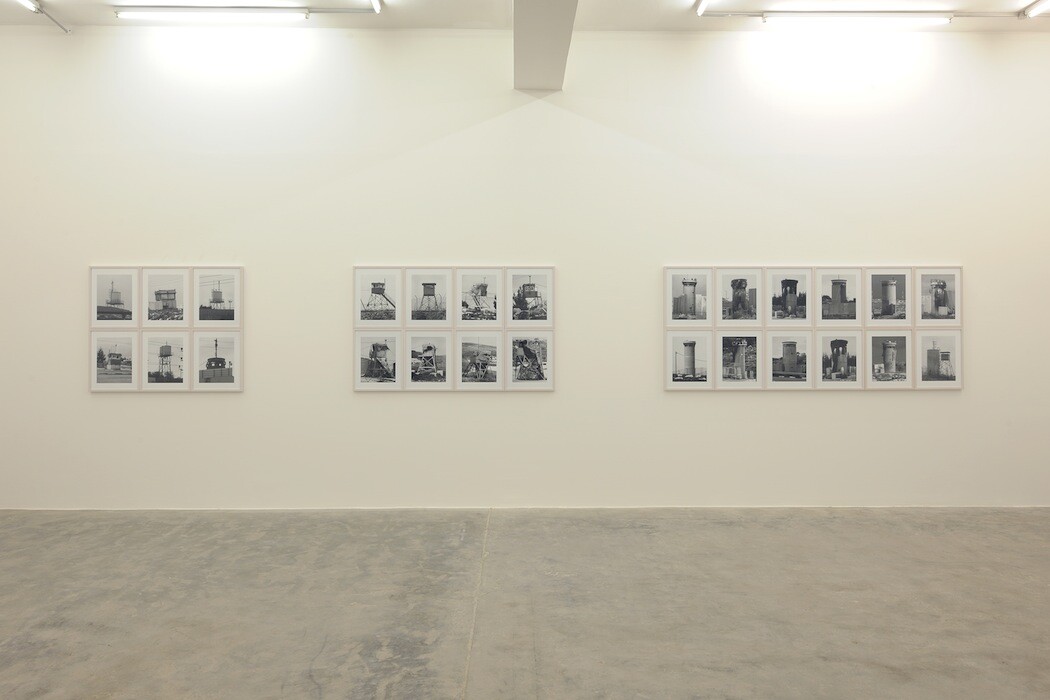

set of 12 black and white photographs, digital prints, 50 × 40 cm
Batniji explores these concepts in several different media. Yet each medium has unstable and unsustainable characteristics.
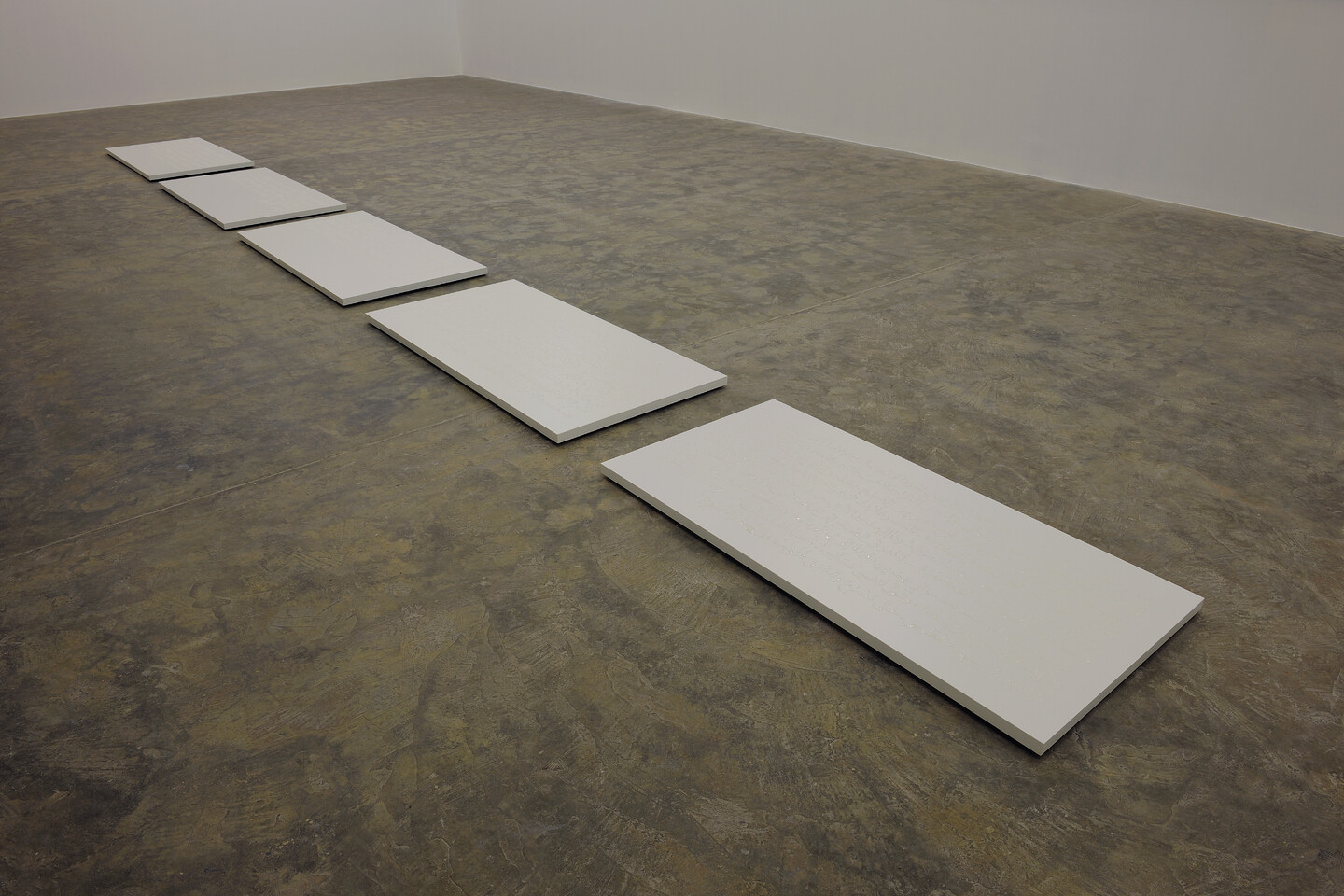
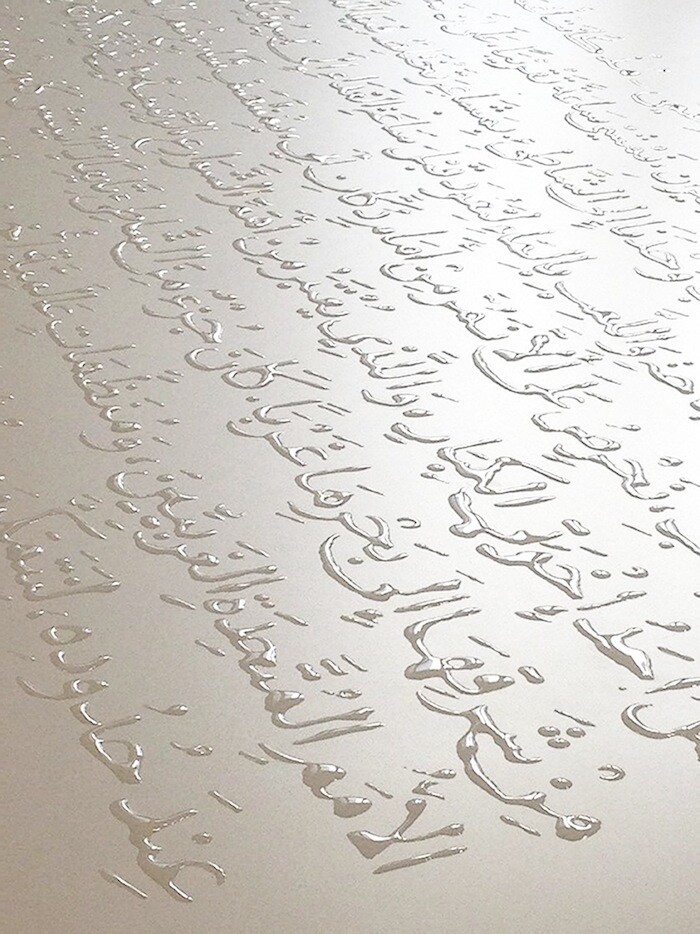
5 wodden panels, silicon, 150 × 75 cm, ED. 8 + 2 AP
The entrance of the gallery features an installation of traditional natural soap to be distributed to visitors. The soaps are inscribed with an Arabic saying that translates to, “no condition is permanent”. The work is set in a block, resembling a brick wall, however, it contradicts this as it is in its nature to dissolve.
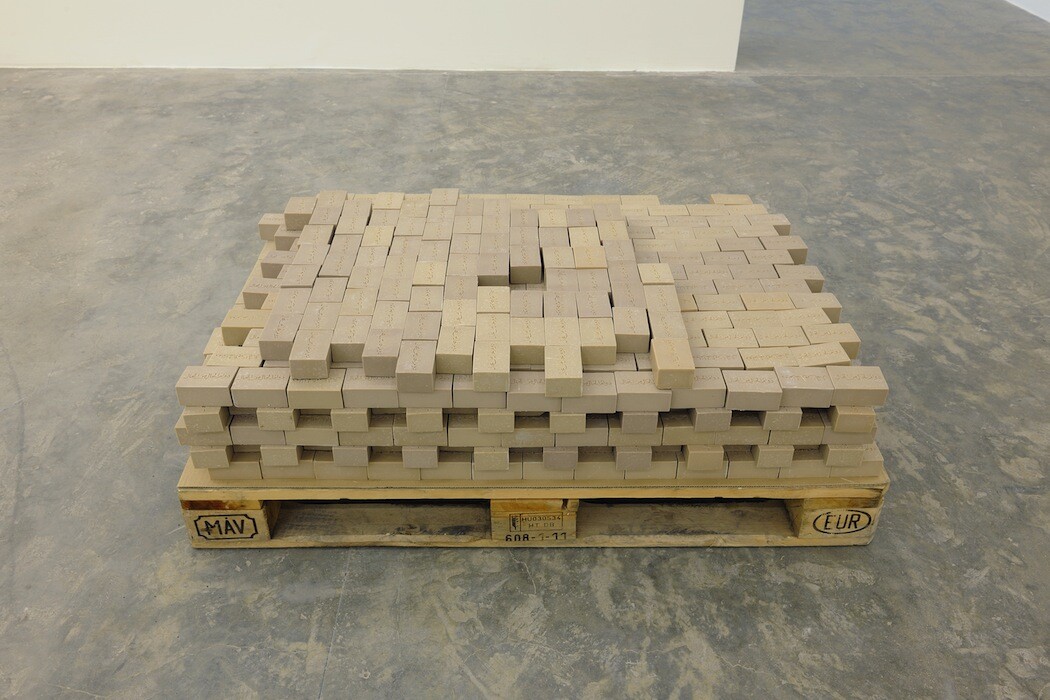
engraved soaps, pallet, each soap: 9 × 6 × 4 cm
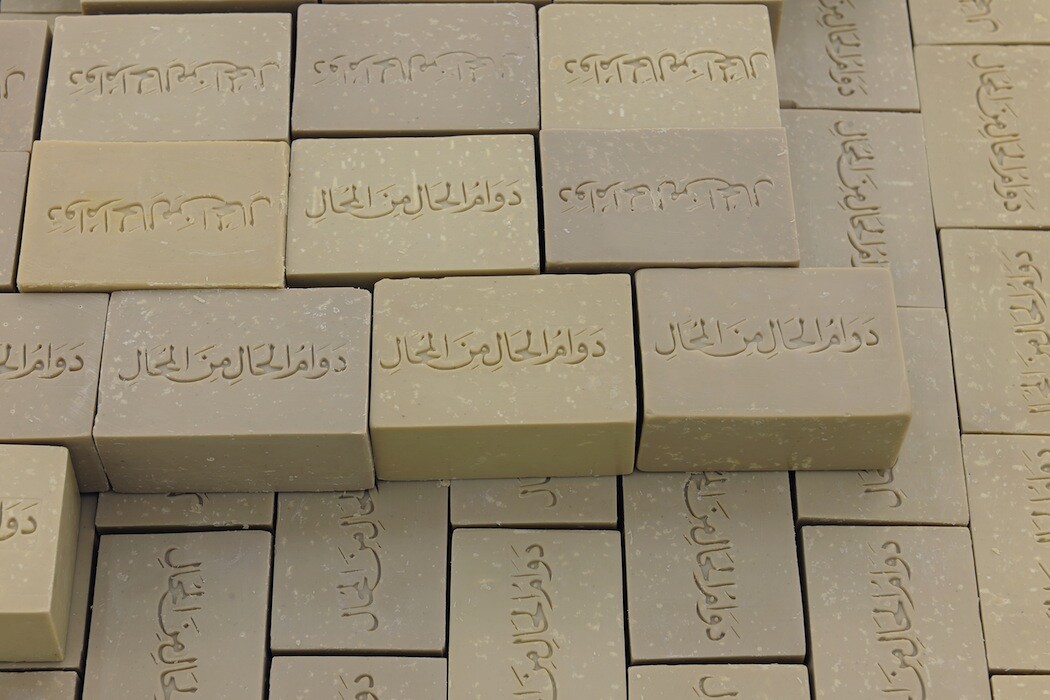
engraved soaps, pallet
The deception in the viewer’s perception is also seen in his untitled work of silkscreens that sprawl across the gallery walls in a single line. At first sight the work appears to be a dark blank line, but once the perspective is changed, the blackened faces of Palestinian martyrs from the second Intifada appear. Like forgotten ghosts, their faces fade in between the visible and invisible

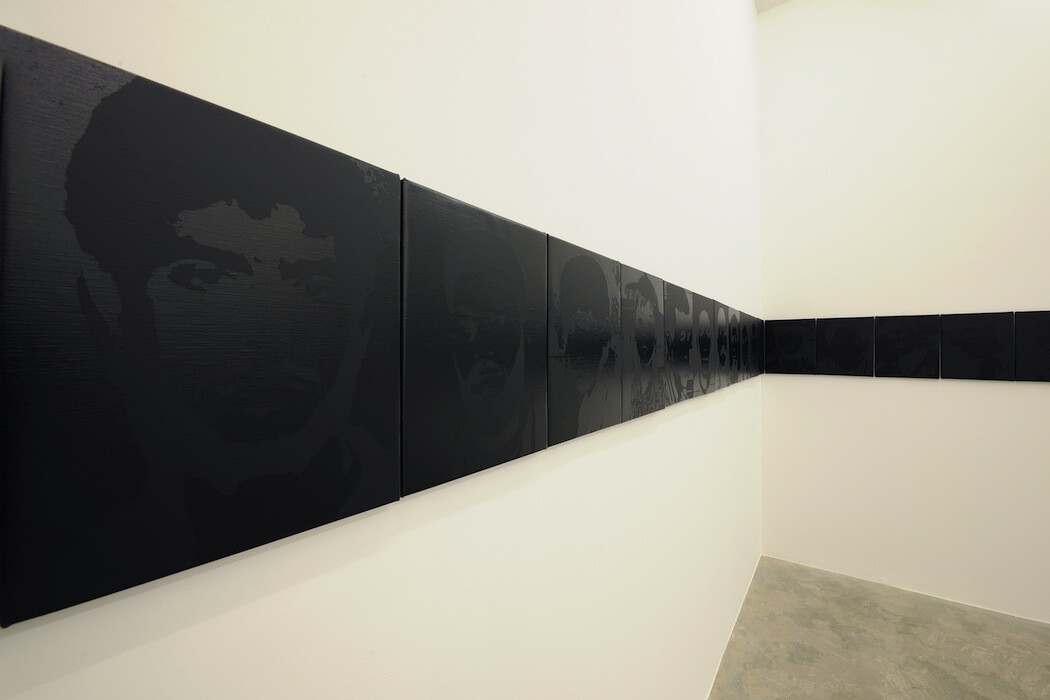
series of 177 portraits, silkscreened on dibond, 39 × 31 cm each
Batniji often works with media that disappear or disintegrate over time. In his performance installation, Hannoun (a Palestinian poppy), which was first presented in the Palestinian Pavillion at the Venice Biennale in 2009, Batniji demonstrates the impermanence of life and memory. Inspired by a childhood memory of sharpening pencils in order to avoid completing an assignment, the artist indulges in an almost cathartic ritual of sharpening the pencil and leaving the discarded blooms of fragile shavings to fall to the floor. The work carries strong symbolism to fallen fighters, which the poppy traditionally represents. Hannoun can be seen as an intimate space of meditation, yet it is still inaccessible. This draws on Taysir state of flux in between Gaza and Paris. His practice is intrinsically linked to Gaza yet he is unable to have a stable practice there.

performance/installation, colour photograph, inkjet print on poster paper (100 × 150 cm), pencil shavings, dimesnions variable
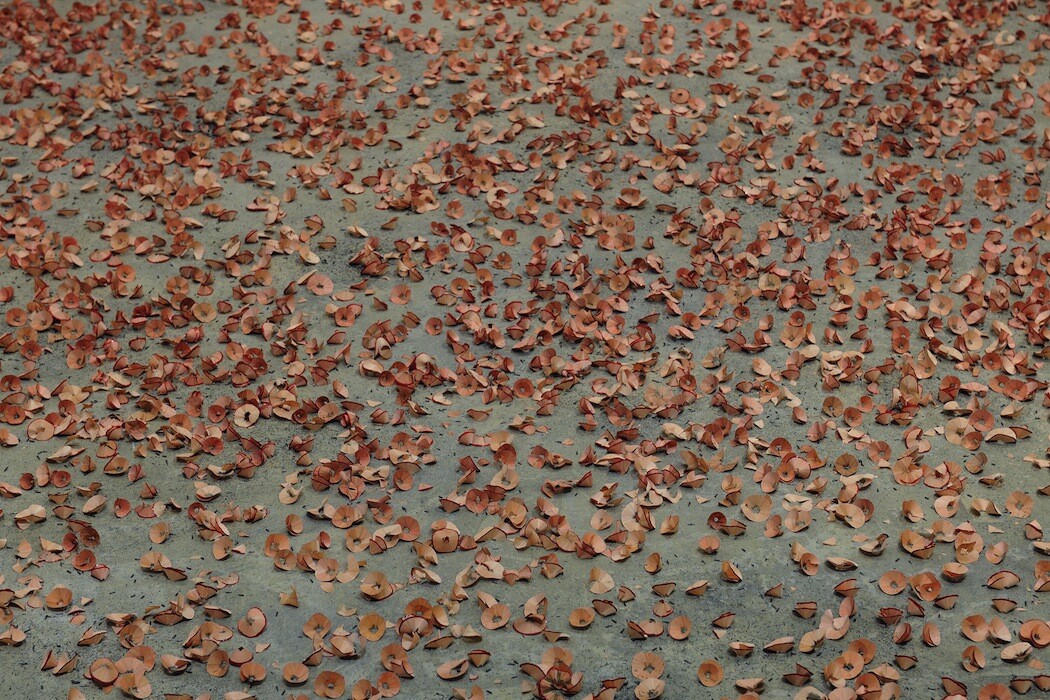
performance/installation, colour photograph, inkjet print on poster paper (100 × 150 cm), pencil shavings, various dimensions

performance/installation, colour photograph, inkjet print on poster paper (100 × 150 cm), pencil shavings, dimesnions variable
Gaza has become a real yet unreachable place of production. Paris, or elsewhere, offers the possibility of production without the physical space to realize it. Just as an atelier is a space in which to elaborate, construct and work, Hannoun is “the attempt of an oeuvre” where what we perceive is not a finished product but rather the traces of its possible realization.
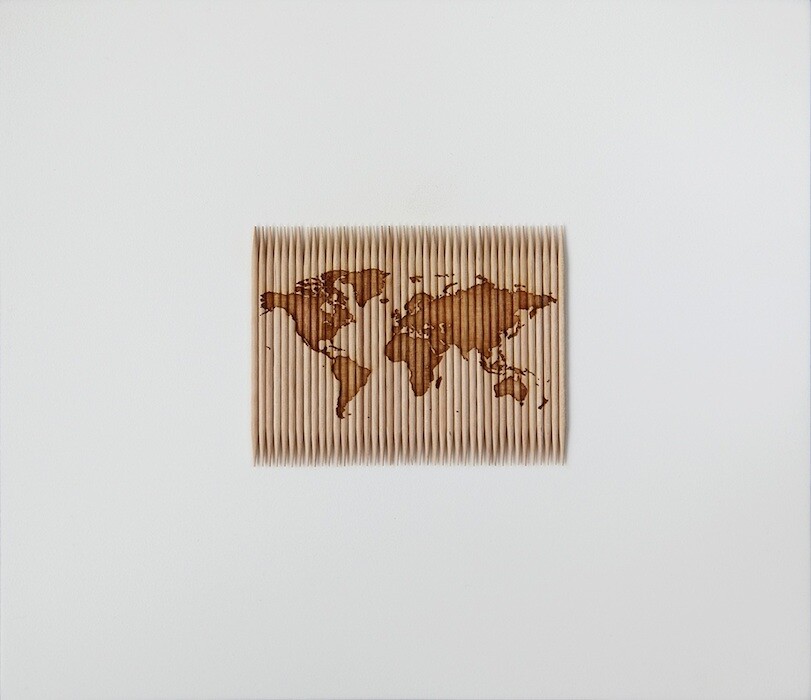
laser engraving, 42 toothpicks, 6.5 × 9 cm, 19 × 22 cm framed, Ed. 5 + 2 AP

glass bunch of keys, scale 1:1, 15 × 12 × 2 cm, Ed. 8 + 2 AP
Taysir Batniji (born1966, Gaza, Palestine) received his BFA from Al Najah University. He went on to study in Italy and France. He participated in the Venice Biennale (2003, 2009 & 2011), the Istanbul Biennial (2012), along with solo exhibitions at Espace Culturel Robert de Lamanon (Marseille, 2013), La BF15 (Lyon, 2012), Musée d'Art et d'Histoire (Geneva, 2007) , and Witte de With Center for Contemporary Art (Rotterdam, 2004). He has been included in group shows at the Fotohof (Salzburg, 2013), Villa Medici (Rome, 2012) CCA Wattis (San Francisco, 2012), Kunstwerke (Berlin, 2011), Institut du Monde Arabe (Paris, 2009), and many others. His work was acquired by the collections of the Centre Georges Pompidou, FNAC, France, the Victoria & Albert Museum, and Fondation Louis Vuitton, among others.
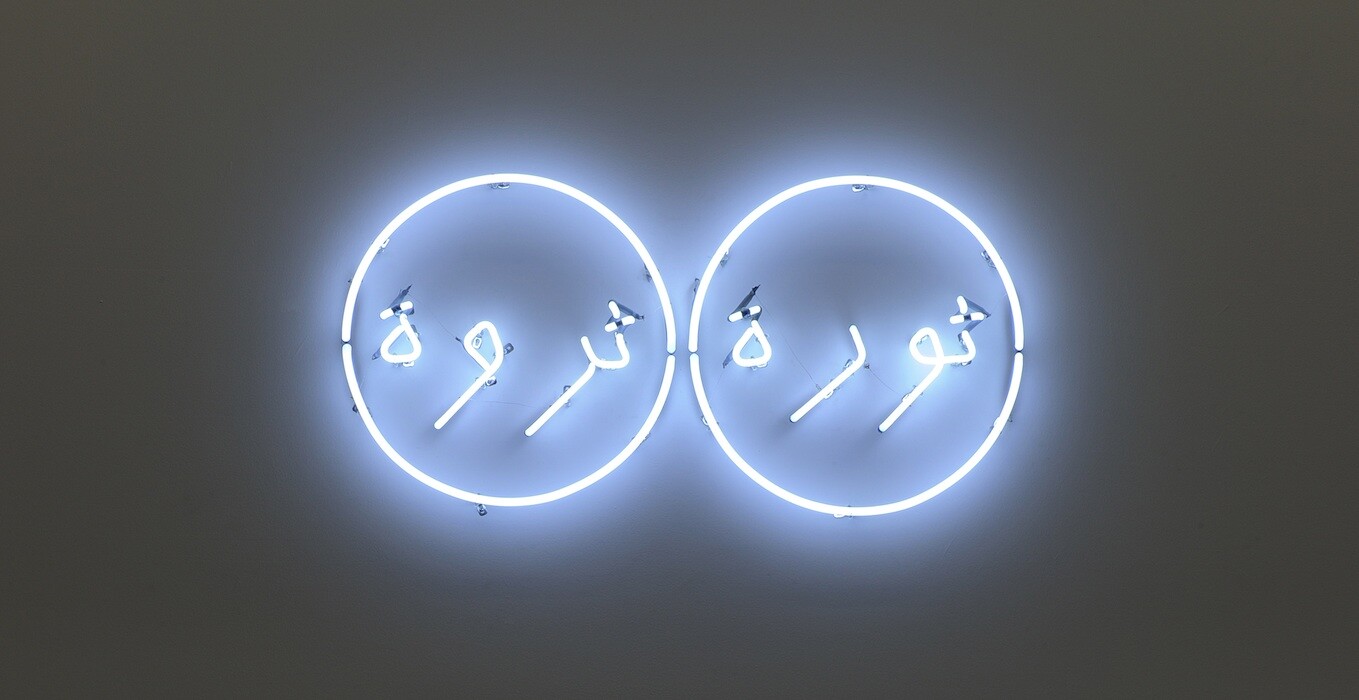
neon, 50 × 100 cm, Ed. 5 + 2 AP